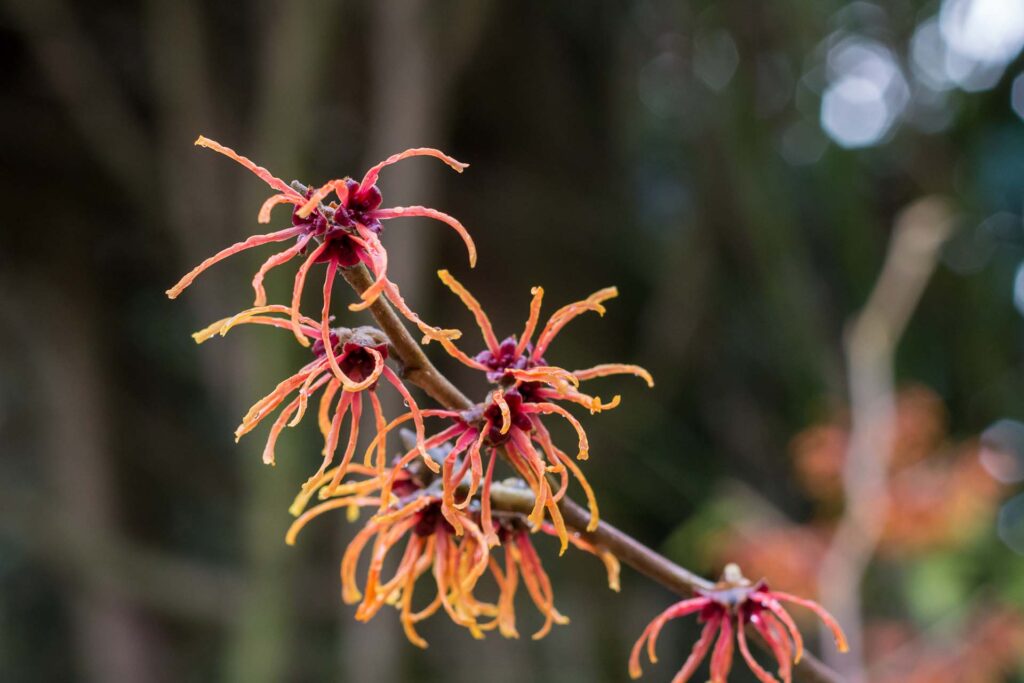
Winter, you’ve never smelled so good
According to a recent garden trends survey 49% of us use our gardens to feed/watch or to encourage wildlife. We spend around £250 million a year on feeding birds alone but whilst many of us step up our bird feeding habits through the winter it can be a tough time of year for our beleaguered winter-active pollinators, with natural food sources being generally, and literally, very thin on the ground. But that doesn’t have to be the case in our gardens. There are some fantastic winter flowering plants that can not only be a life saving food source for our pollinators, but can also add beauty, interest and often masses of scent to our winter gardens too.
In no particular order here are some of our scented winter favourites that are perfect for pollinators too:
- Clematis ‘Jingle Bells’ flowers between January and March. An evergreen climber its citrus-scented flowers are creamy white and bell shaped. There are plenty of other winter-flowering, scented clematis too such as balearica or ‘Lansdowne Gem’.
- Mahonia – an evergreen shrub with spiney green leaves and clusters of often heavily scented, usually yellow flowers in autumn through to spring – try ‘Sweet Winter’ or ‘Charity’
- Daphnes are super-fragrant. Daphne odora ‘Aureomarginata’, for instance, is a much-used evergreen shrub with variegated green and yellow leaves. Its clusters of richly smelling purple buds to pink flowers appear January to March.
- Sarcococca – also known as Christmas Box or Sweet Box because of its sweetly scented pure white flowers which appear from December through to March. An evergreen shrub perfect for shade.
- Viburnum x bodnantense ‘Dawn’ – often looking like a very small tree this deciduous shrub produces dense clusters of richly fragrant dark pink flowers on its bare stems from November to March.
- Chimonanthus praecox – its common name, wintersweet gives the game away. It produces small, sweetly scented yellow flowers with purple centres, on bare branches from December to February.
- Hamamelis x intermedia also produces its flowers on bare branches in December through to February. Different varieties produce different flower colours from Pallida’s sulphur yellow to Diane’s coppery-red.
- Winter honeysuckle such as Lonicera fragrantissima is a deciduous or semi-evergreen shrub that produces scented, creamy-white flowers in December through to March.
- For scented perennials that pollinators adore, try Hellebores. Not all of them are scented but varieties such as ‘Miss Jekyll’s Scented’ or odorus are, and can produce flowers from December through to May. These nodding, often semi-evergreen perennials are a star of the winter border.
- A variety of spring bulbs including aconite, crocus, daffodil, muscari, tulip and snowdrops all have scented varieties too and are all fabulous for pollinators. A mix of varieties can provide flowers and scent from February through to May and by adding scented cyclamen varieties too, this season can be extended all the way back to October.
Winter flowers tend to be less showy than their other-season counterparts but they do often pack a punch scent-wise since that is one of their main communication tools for attracting pollinators. So, including as many plants like these in your winter garden will pretty much guarantee a busy, pollinator-viewing winter experience. Though in terms of designing with scent try to choose plants whose scents complement each other rather than compete. Too many different scents can be overpowering but if all you’re likely to do is look at your winter garden through the windows of your home then competing scents aren’t going to be problematic. If you’re likely to be immersed in your winter garden then choosing plants whose scents complement each other or placing plants carefully when scents are likely to compete with each other, then becomes key.
Generally speaking, placing scented plants under windows, or next to doorways and gates and along pathways or the edges of patios, works wonderfully well for us because they allow us to engage more easily with their scent. But wherever they are placed, scented, winter-flowering plants can be life-savers for our winter-active pollinators.




